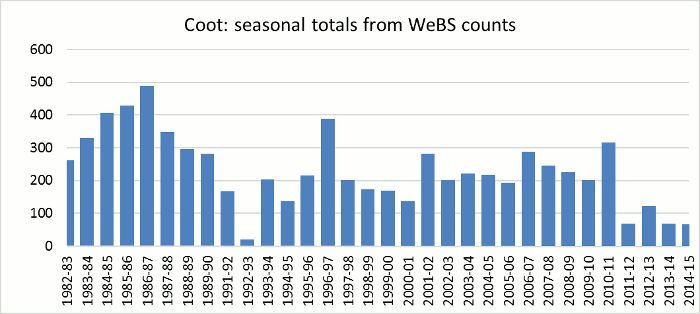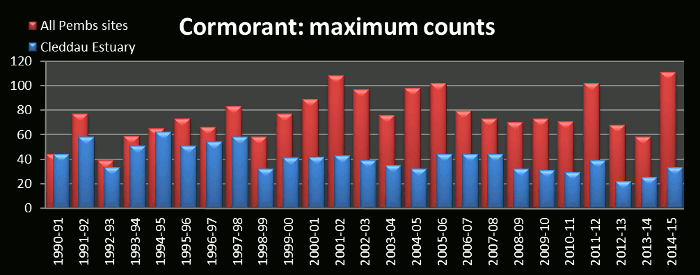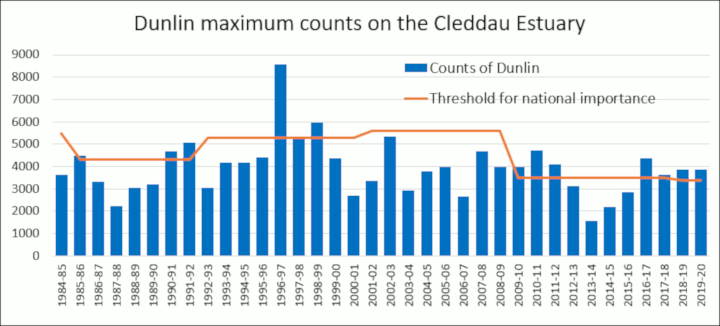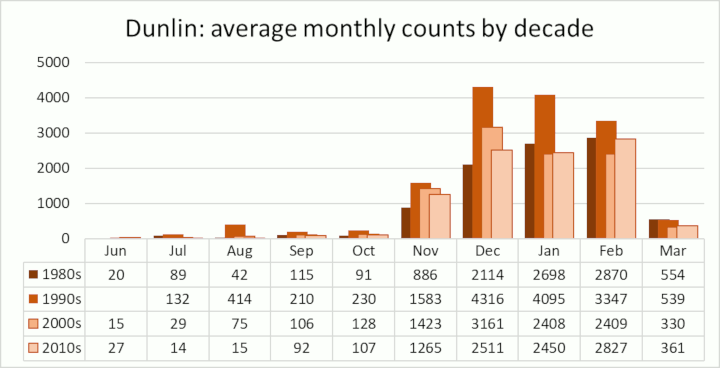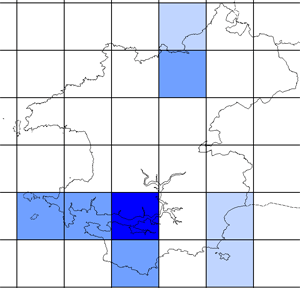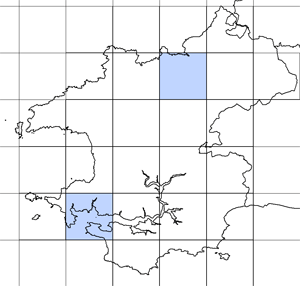Brent Goose - 2019 WeBS
 Saturday, February 22, 2020 at 6:01PM
Saturday, February 22, 2020 at 6:01PM Brent geese were occasional visitors to Pembrokeshire before 1990, and only began to appear regularly on WeBS counts in1993-94 as shown below.
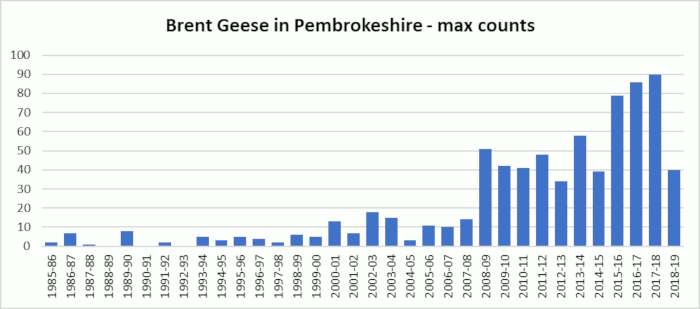
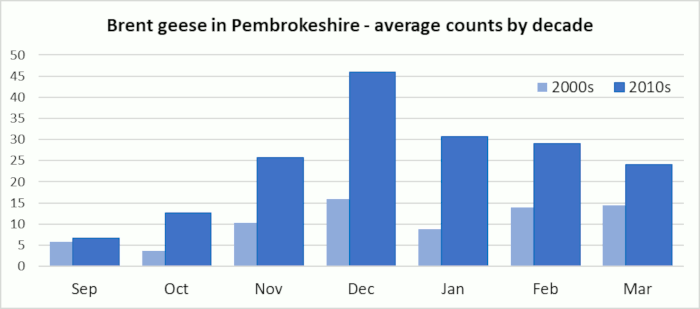
The highest numbers in any season are recorded between December and February
Almost all brent geese are seen on the Cleddau, especially at the Gann or at Angle Bay. Just a handful are counted on the Nevern and Teifi.
As the birds commute - either in a flock, or in small groups - between the Gann and Angle Bay - it is possible that they can be double-counted at times. However, an individual count of 77 at Angle Bay in December 2016, (and other individual counts - 68 at the Gann in 2012 and 62 at Angle Bay in 2017 - on non-WeBS days) that suggest the WeBS totals are reasonable.
Almost all birds are of the light-bellied race (hrota) - with just a handful of dark-bellied birds recorded.
Many ringed birds have been observed, and these prove movements between Ireland (main ringing station), Pembrokeshire and Brittany, and to north-east Canada (breeding grounds) via Iceland and Greenland.
AH
Pembrokeshire WeBS coordinator
 WeBS,
WeBS,  wildfowl,
wildfowl,  winter in
winter in  Brent Goose
Brent Goose 

